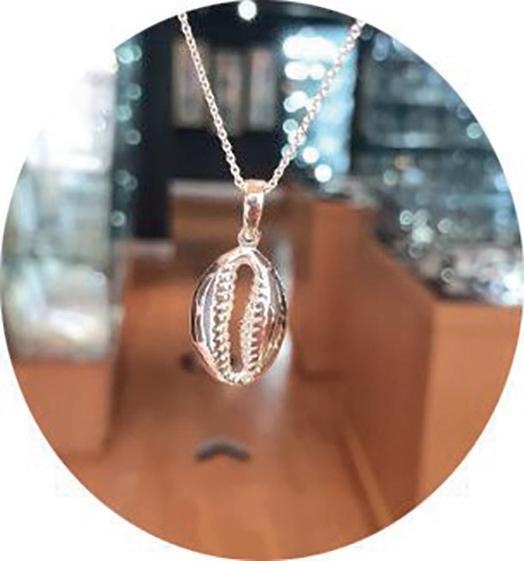
6 minute read
Women Of Norfolk Edith Cavell
Women Of Norfolk
Edith Cavell (1865 - 1915)
Advertisement
Born Edith Louisa Cavell on December 4th 1865 to Reverend Frederick Cavell (1824-1910) and his wife Louisa Sophia Warming (1835-1918) in the small village of Swardeston (approximately four miles south of Norwich).
She was the eldest of four children; Florence Mary (b.1867), Mary Lilian (b.1870) and John Frederick (1872-1923). Little is known of her life (early years and adolescence) prior to being a nurse, other than she was educated at Norwich High School for Girls and then at two boarding schools, one in Somerset and another in Peterborough.
In 1890, Edith took the role of governess to a family in Brussels, a position she held for five years until her father’s illness forced her to return to England so that she could care for him. This experience drove her to become a nurse and in 1896, at the age of thirty years old, Edith applied to be a nurse probationer at the London Hospital, under the Matron Eva Luckes (1854-1919).
During the Typhoid outbreak in Maidstone in 1897, Edith, alongside six other nurses who were under the tutelage of Matron Luckes, were sent to assist with the care of patients. The medical staff (including Edith) who were sent to Maidstone were awarded the “Maidstone Medal” for their work. She also served at a number of hospitals throughout England, one of which was the Shoreditch Infirmary (now known as St. Leonard’s Hospital) and went on to work as a private travelling nurse treating patients in their homes - their illnesses included cancer, gout, pneumonia, pleurisy and appendicitis.
In 1906 Edith, was appointed the temporary post of Matron at the Manchester and Salford Sick and Poor and Private Nursing Institution, while there she attended the Sacred Trinity Church on Chapel Street in Salford. A year later, she was recruited by the Belgian royal surgeon Antoine Depage (1862-1925) to be the Matron of the newly established Berkendael Medical Institute in Ixelles, Belgium. Within the year of her placement, Edith was training nurses for three hospitals, twenty four schools and thirteen kindergartens in Belgium, while also launching the nursing journal ‘L’Infirmiere’. She worked closely with Dr. Depage and after his investigation into the care provided by religious institutions, he concluded they were not keeping up with medical advances and she was sent to a new secular hospital at Saint-Gilles as Matron.
During the outbreak of the First World War, Edith was visiting her recently widowed mother in Norfolk and was soon called back to Brussels, where she was informed that her clinics and nursing schools had been taken over by the Red Cross. There, Edith took the role of nurse for the Red Cross and cared for both Allied and German soldiers. In November 1914, Belgium was under German occupation and Edith took to sheltering British soldiers in order to have them transported out of Belgium to the Netherlands (a neutral state during the war) and returned to England. Edith, alongside others such as Philippe Baucq, Louis Severin, Louis Thuliez and Countess Jeanne de Belleville, worked to hide wounded British and French soldiers and Belgian civilians of military age from the German authorities. Those of military age were sent to Prince Reginald de Croy’s chateau of Bellignies (on the border of Northern France and Belgium), where they were given false papers, maps and enough money for them to reach the Dutch frontiers. This, however, placed Edith and the others in violation of German military laws that were in power during the German occupation of Belgium.
The German authorities in Belgium had become suspicious of Edith, and on August 3rd 1915, she was arrested for harbouring Allied soldiers, on the tip off from French-national Georges Gaston Quien (who would later be convicted by a French court for collaboration.) Edith was held at a prison in Saint-Gilles for a total of ten weeks, with the last two weeks being spent in solitary confinement. Three depositions were made to the German police, where she admitted being instrumental in transporting an estimated sixty British soldiers and fifteen French soldiers through Dutch borders to Britain and an accumulation of one hundred French and Belgian civilians to the frontier; most of whom had been sheltered in her own house.
The day before her trial Edith signed a statement, in which she also confessed that many of the soldiers that had arrived in Britain
had sent her letter of thanks. This was used as evidence that she had not only helped soldiers to get to the Dutch frontiers but also helped soldiers escape to a country that was currently at war with Germany - a penalty, under German military law, that was punishable by death.
Under Paragraphs 58 and 90 of the German Penal Code (where, during wartime, anyone aiding a hostile power or causing harm to German [or Allied] troops shall be punished by death) Edith was convicted of war treason. At the trial twenty-six were charged, five of whom were sentenced to death; Cavell, Baucq, Thuliez, Severin and the Countess Jeanne de Belleville. However, under the First Geneva Convention (1864) protection was guaranteed for those who acted in ignorance of the consequences (simply put, they were not aware of the German Military Law), thus the latter three defendants were granted reprieves.
Unfortunately for Edith and Philippe Baucq, they had already confessed to having full knowledge of their actions and thus giving German law justification for their execution. From this, the British government were unable to give Edith aid and the Under-Secretary of State at the time, Lord Robert Cecil (1864-1958) made a statement that any intervention on the government’s behalf could do more harm for her than good.
Furthermore, the Military Code did not discriminate as to whether the accused was male or female, unless it was discovered that the accused woman was pregnant; which would not allow the execution to go forward (however, Edith was not).
It also came to light that Edith may have been involved in espionage, by feeding information to Allied troops from the German soldiers that were under her care. In 2015, the former Director-General of MI5, Stella Rimington (b.1935) announced that she had discovered documents in the Belgian military archives confirming intelligence gathering by Edith. Not only that, she also used a secret code (remarked as amateurish) to relay information to a network of contacts. This would also bring into question her role as a nurse for the Red Cross and jeopardise the neutrality of the organisation during wartime.
At the age of forty-nine, Edith was brought before a firing squad on October 12th 1915 and fatally shot. It was recorded that the night before her execution she said “Patriotism is not enough. I must have no hatred or bitterness towards anyone.” - the idea of patriotism would again raise issues with her role within the Red Cross. Years later, the British PostWar Committee of Enquiry into Breaches of the Law of War regarded the German verdict as legally correct.
In the months and coming years after her execution, Edith was used heavily in British propaganda with newspapers articles, illustrations, pamphlets, books and even films romanticising her death. The most popular image created of Edith was that of an innocent victim, which was used to encourage young men to enlist. Another portrayal of Edith used by the British government was that of a brave, and patriotic British (and most importantly Anglican) nurse who only wanted to do good.
There are many memorials that remain today dedicated to Edith, for example the Edith Cavell Memorial at St. Martin’s Place (London), the Memorial to Edith Cavell outside the Norwich Cathedral (Norwich) and the Monument of Edith Cavell and Marie Depage in Brussels (Belgium).
Article By Luke Wells.










